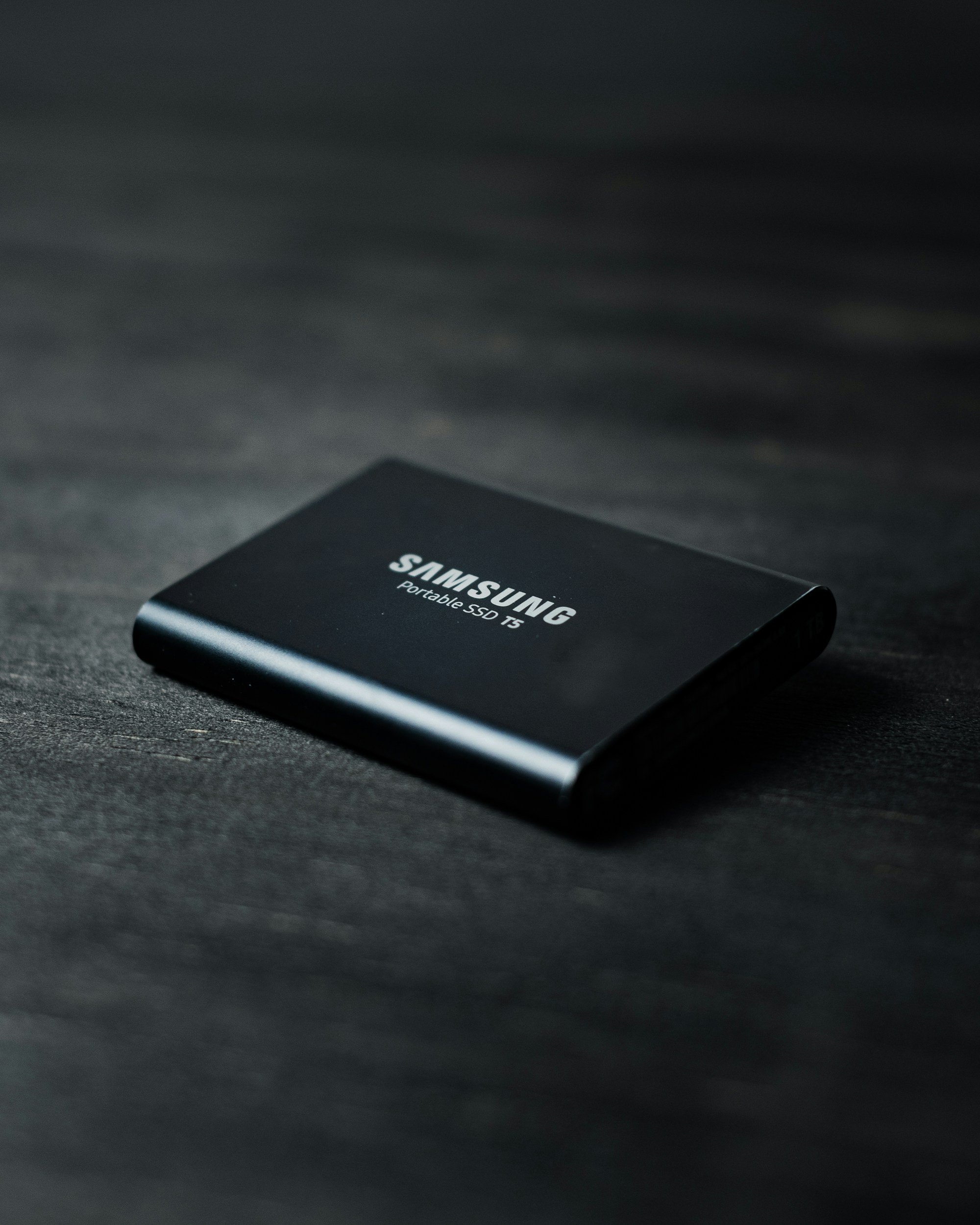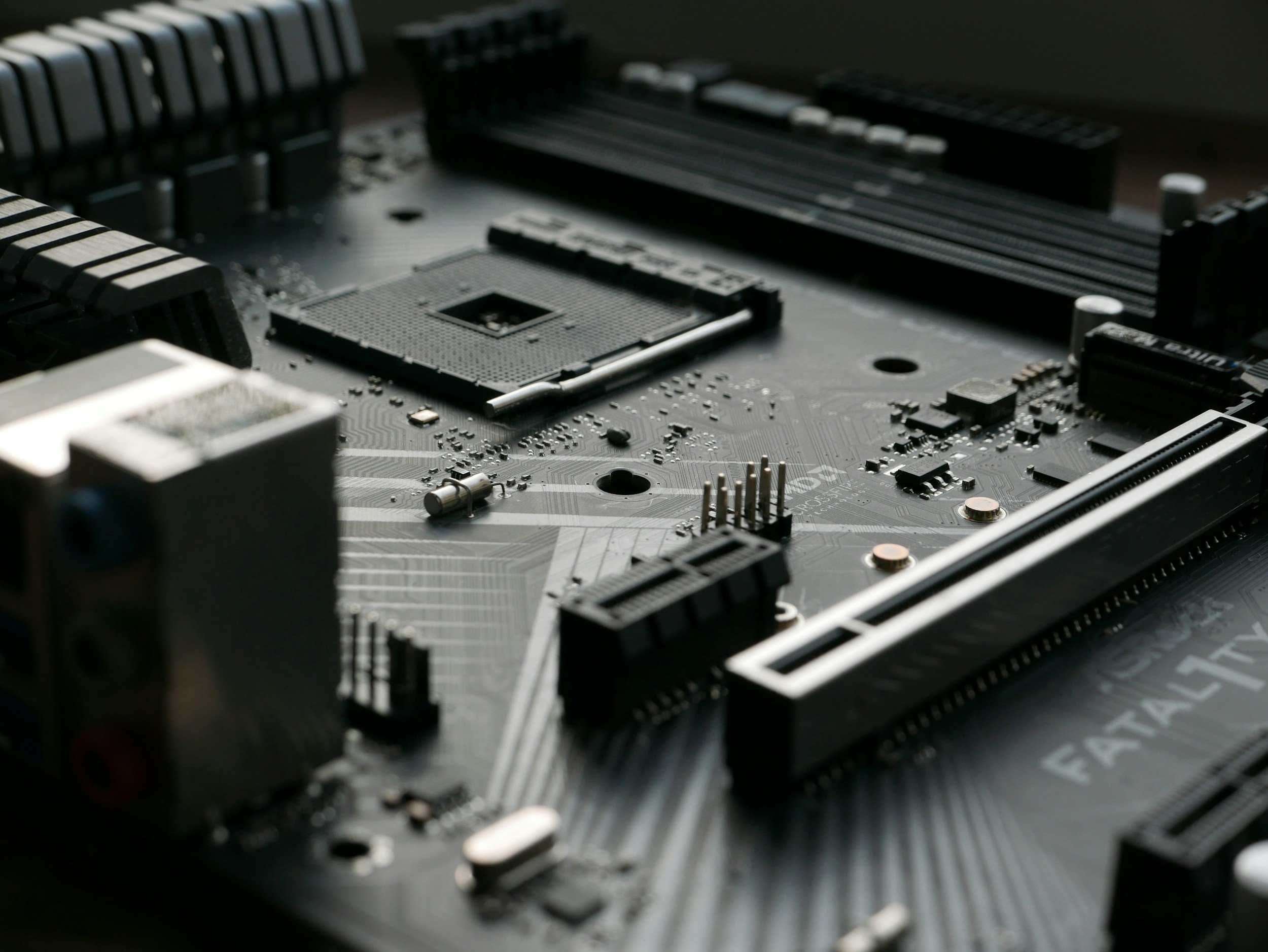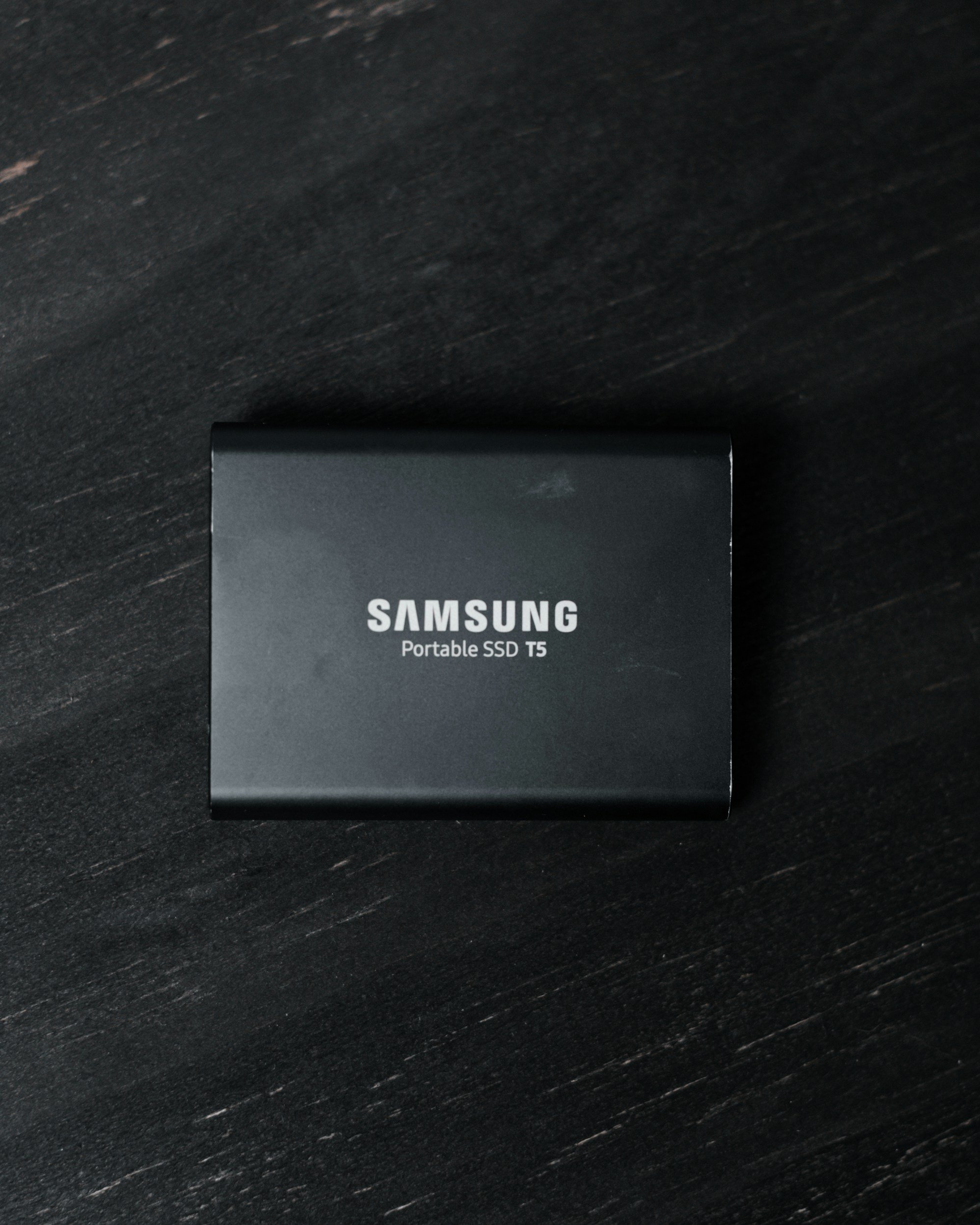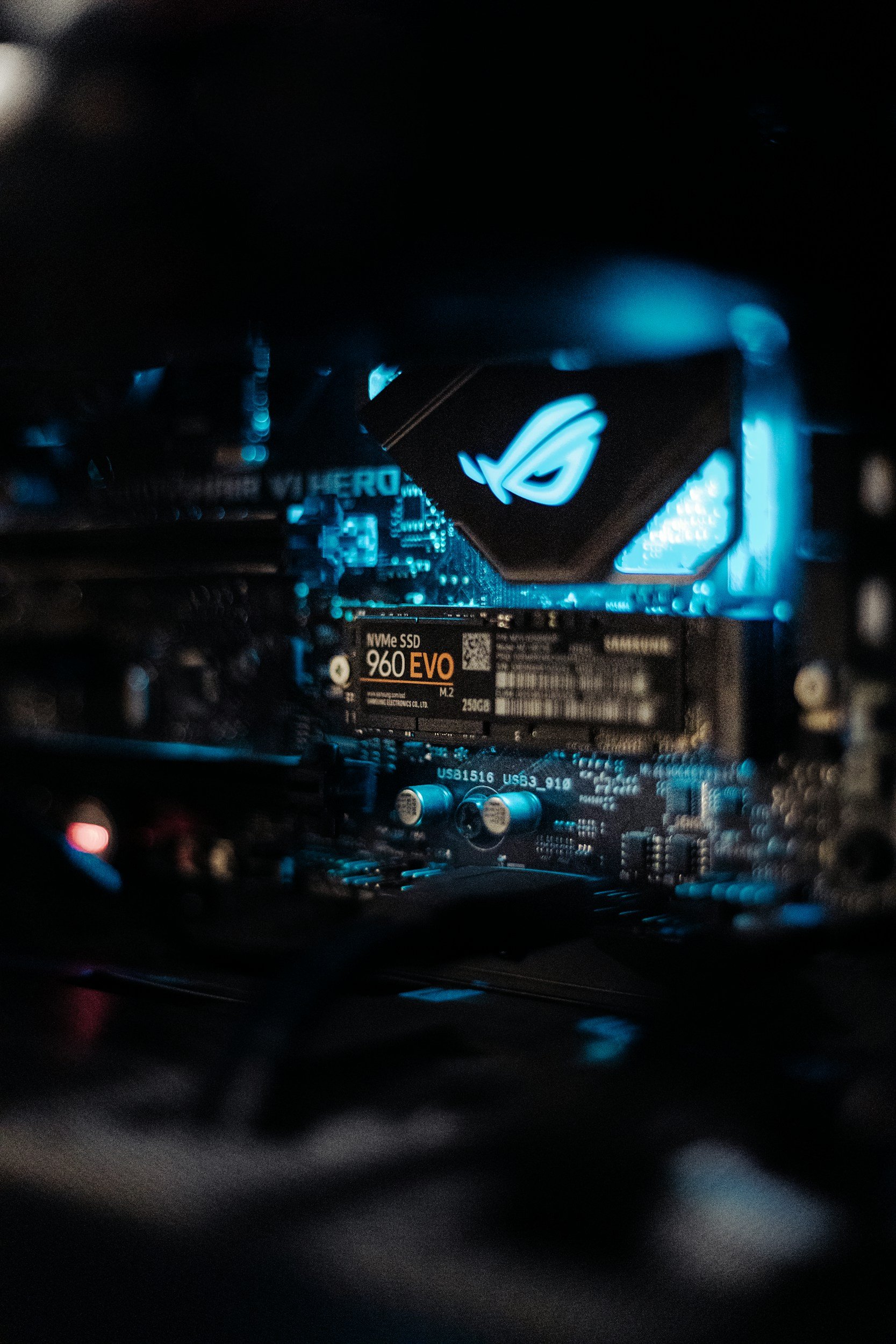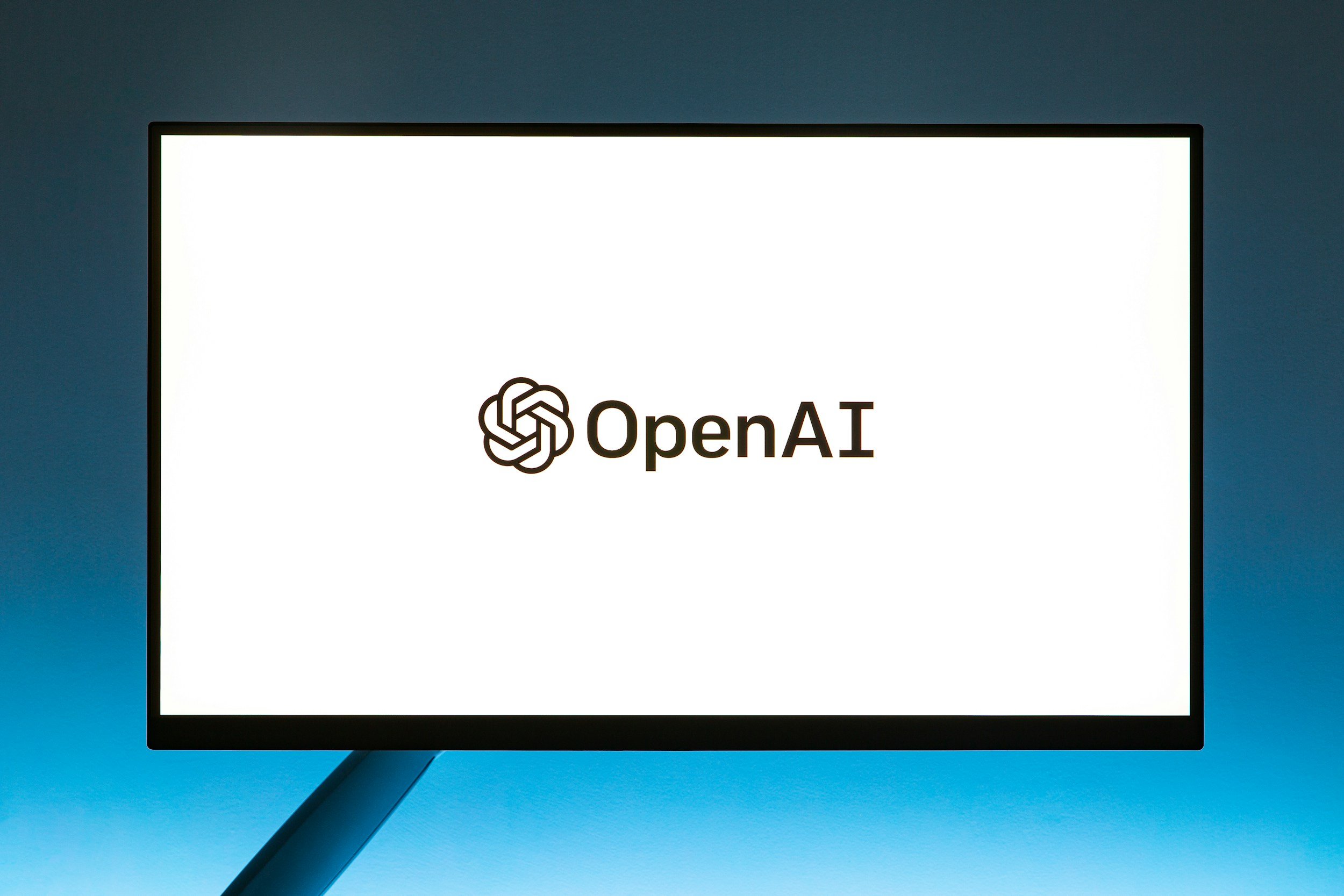NVMe vs. SSD – What’s the Difference?
When you purchase through links on my site, I may earn an affiliate commission. Here’s how it works.
Table of Contents Show
You've probably heard the terms NVMe and SSD thrown around, maybe even seen them on the spec sheet of your next laptop or build. But what are these technologies, really? And more importantly, does it even matter which one you choose? Spoiler alert: it absolutely does.
In this guide, we're cutting through the jargon and getting down to the basics of NVMe and SSD. We'll break down the tech behind each, show you real-world performance differences, and help you figure out which one is the perfect fit for your needs.
Whether you're a hardcore gamer, a content creator, or just someone who wants their computer to feel snappy, this guide has got you covered.
By the time we're done, you'll be equipped to make an informed decision. Let’s get started!
What Is an SSD?
An SSD, or Solid State Drive, is essentially a storage device that ditched the spinning platters of old-school hard drives for a grid of flash memory chips. Think of it like a giant USB stick living inside your computer.
This switch to flash memory is the secret sauce behind SSDs' superior speed and reliability. No moving parts means they're not just faster, but also more durable, quieter, and less power-hungry. It's a win-win-win-win.
Now, you'll typically find SSDs in two main form factors: the classic 2.5-inch drive, which looks like a slimmer version of the hard drives you're used to, and the more compact M.2 format, which resembles a stick of gum and slots directly onto your motherboard. Both do the same job, but the M.2 is the sleeker, more modern option, especially in laptops and smaller builds.
What Is NVMe?
NVMe, or Non-Volatile Memory Express, on the other hand, isn't a type of drive itself. It's more like a set of rules, or a protocol, that governs how your computer talks to the SSD. It's the language they use to communicate. NVMe was specifically designed for SSDs, and it's way more efficient than the older SATA protocol used by those 2.5-inch SSDs.
Think of it like this: your SSD is a sports car, and the traditional SATA interface (the older way of connecting drives) is a two-lane highway with a speed limit. NVMe is like building a massive eight-lane autobahn with no speed restrictions. It allows your SSD to reach its full potential, resulting in faster speeds, lower latency (the time it takes for a request to be fulfilled), and smoother multitasking.
While some SSDs use the older SATA connection, NVMe drives exclusively use the M.2 form factor. That tiny M.2 slot on your motherboard is the key to unlocking the full potential of NVMe's speed. It's a direct line to your CPU, bypassing any bottlenecks and letting data flow freely.
To sum it up, all NVMe drives are SSDs, but not all SSDs are NVMe. Confused? Don't worry, it'll make more sense as we dive deeper. But for now, just remember that NVMe represents the latest and greatest in storage technology.
NVMe vs. SATA SSDs: Interface Comparison
Alright, let's get a bit more technical here, but I promise to keep it simple. You can think of the interface as the highway that data travels on between your storage and the rest of your computer.
SATA, or Serial ATA, is like that classic highway that's been around for a while. It gets the job done, but it's got a speed limit – think of it as a four-lane highway that can only handle so much traffic at once. This is fine for older hard drives and even some SSDs, but it starts to become a bottleneck when you've got a super-fast NVMe SSD that's ready to push those limits.
NVMe, or Non-Volatile Memory Express, is the newer, wider highway that's been built specifically for high-speed SSDs. It's kinda like expanding that four-lane SATA highway into a massive sixteen-lane expressway. This means a lot more data can travel at the same time, resulting in significantly faster speeds.
To put it in perspective, SATA III, the most common SATA interface, maxes out at around 600MB/s (megabytes per second). NVMe, on the other hand, can theoretically hit speeds of up to a whopping 3,500MB/s on a PCIe 3.0 connection, and even faster on PCIe 4.0.
So, you can see how this difference in bandwidth can make a huge impact on your computer's overall performance. If you're just doing basic tasks like web browsing or word processing, you might not notice a massive difference. But when it comes to demanding tasks like video editing, gaming, or working with large files, NVMe's extra lanes of traffic can be a game-changer.
Now, don't get me wrong, SATA SSDs are still great. They're a massive upgrade over traditional hard drives, and they're definitely more budget-friendly.
But if you're after the absolute best performance, NVMe is the way to go. It's the future of storage, and it's only going to get faster as technology evolves.
NVMe SSD vs. SATA SSD: Protocol Comparison
Okay, now that we've covered the highways, let's talk about the traffic management system – the protocol. This is like the set of rules that determines how efficiently data flows on those highways we talked about.
AHCI, or Advanced Host Controller Interface, is the older protocol used with SATA drives. It was originally designed for spinning hard drives, and while it works with SSDs, it's not really optimized for them.
It's kind of like trying to direct modern traffic with an old-school traffic light system. It can still manage the flow, but it's not as efficient as it could be. AHCI has limited command queues and struggles with parallelism, which means it can't take full advantage of the speed that SSDs offer.
This is where NVMe comes in with its new protocol. Think of it as a smart traffic management system that uses AI to predict traffic patterns and optimize flow in real-time. NVMe is designed specifically for SSDs, and it's way better at handling the high-speed, parallel nature of flash memory.
It can handle much larger command queues, allowing it to process multiple requests simultaneously. This difference in protocol efficiency is another major reason why NVMe drives are so much faster than their SATA counterparts.
So, if you're looking for the most responsive and efficient storage solution, NVMe is the way to go. It's not just about the raw speed of the highway (the interface), but also about how well the traffic is managed (the protocol).
SATA SSD vs NVMe SSD: Performance Metrics
Now let's get into the numbers, the part where we really see the difference between NVMe and SATA SSDs. When we talk about performance, we're looking at a few key metrics:
Sequential Read/Write Speeds
Sequential Read/Write Speeds is how fast your drive can read or write large, continuous chunks of data, like when you're transferring a big video file. NVMe SSDs absolutely crush SATA SSDs in this department.
We're talking several gigabytes per second for NVMe (over 3,000 MB/s) compared to a few hundred megabytes per second for SATA (they typically top out around 550 MB/s). In real-world terms, this translates to much faster file transfers, shorter loading times for games and applications, and a smoother experience overall.
Random Read/Write Speeds
Random Read/Write Speeds ****measure how quickly your drive can access small, scattered pieces of data, like when you're opening multiple files at once or running a program with lots of small operations.
NVMe once again takes the crown here, especially in high queue depth scenarios, meaning when your drive is juggling multiple requests at the same time. This is crucial for heavy multitasking and demanding workloads like video editing and 3D rendering.
Latency
Latency is the time it takes for your drive to respond to a request. It's like the delay you experience when you click on something and it takes a second for it to happen.
NVMe drives have significantly lower latency than SATA SSDs, making your system feel snappier and more responsive. This is particularly noticeable in everyday tasks like opening files, launching applications, and booting up your computer.
IOPS (Input/Output Operations Per Second)
IOPS measures how many read or write operations your drive can handle in a second. NVMe drives can handle a much higher number of IOPS compared to SATA SSDs, making them better suited for tasks that involve lots of small, random operations, like database management or server workloads.
Now, I know all this tech jargon can be a bit overwhelming, but the bottom line is this: NVMe SSDs are significantly faster than SATA SSDs in almost every way that matters. Whether you're a gamer, a content creator, or just someone who wants a super-fast and responsive computer, NVMe is the way to go.
But hold up, don't rush out to buy one just yet! There are still some things to consider, like cost and compatibility.
NVMe vs. SATA SSDs: Real-World Performance
Alright, enough with the tech talk, let's get real. You're probably wondering, "Does all this NVMe vs. SATA stuff actually make a difference in my day-to-day life?" You bet it does! Let's break down some real-world scenarios where NVMe shines.
Boot Times
Let's start with boot times. Remember those days when you'd hit the power button and go grab a coffee while your computer slowly chugged to life? With NVMe, those days are long gone.
We're talking boot times that are often measured in seconds, not minutes. That's right, you can go from hitting the power button to being on your desktop in the blink of an eye. I honestly can’t image going back to SATA anymore for this reason alone.
Application Loading
But it's not just about booting up faster. Applications, games, and large files all load significantly quicker on NVMe drives. Imagine firing up Photoshop or Premiere Pro in a matter of seconds, or jumping into your favorite game without having to wait through those agonizing loading screens. That's the kind of speed NVMe brings to the table, and one gets used to it rather quickly.
Gaming
And speaking of gaming, NVMe can make a world of difference there too. Not only do games load faster, but you'll also experience smoother gameplay with less stuttering and fewer frame drops. This is because NVMe can handle those massive game assets much more efficiently than a SATA SSD.
Content Creation
If you're a video editor, 3D artist, or any kind of content creator dealing with massive files and resource-intensive applications, NVMe is your new best friend.
Rendering times will be drastically reduced, scrubbing through timelines will be buttery smooth, and overall, you'll be able to work faster and more efficiently. NVMe can even speed up tasks like importing footage or exporting final projects.
Now, I'm not saying you need an NVMe drive to get work done or enjoy your computer. SATA SSDs are still plenty fast for most everyday tasks. But if you're pushing the limits of your machine, whether it's gaming, content creation, or just heavy multitasking, NVMe is definitely worth considering. It's that extra boost that can make your computer feel like a whole new machine.
NVMe vs. SATA SSDs: Cost Considerations
As much as we'd all love the absolute fastest storage possible, we've gotta be realistic. NVMe drives generally come with a higher price tag compared to SATA SSDs. It's the premium you pay for that extra speed and performance.
But here's the thing: prices for NVMe drives have been coming down over time. While they're still not as cheap as SATA SSDs, the gap isn't as wide as it used to be. So, the question is, is that extra cost worth it for you?
Well, that depends on your needs and budget. If you're building a budget-friendly PC for everyday tasks like web browsing, email, and office work, a SATA SSD will be more than sufficient. You'll still get a massive speed boost over a traditional hard drive, and you'll save a good chunk of change.
But if you're investing in a high-performance machine for gaming, content creation, or professional work, the extra cost of NVMe might be justified. The speed and responsiveness you gain could be a real game-changer for your workflow and overall experience.
Here's a quick tip: Don't just look at the upfront cost. Consider the cost per gigabyte as well. Sometimes, you might find a higher-capacity NVMe drive that's actually more cost-effective per gigabyte than a smaller SATA SSD.
NVMe vs. SATA SSDs: Compatibility
We need to have a quick chat about compatibility. I don't want you to get excited, drop some cash on a drive, and then realize your system isn't even ready for it.
First things first, you need to check your motherboard. NVMe drives connect to your motherboard through a specific M.2 slot. Not all M.2 slots are created equal, though. Some only support the older SATA protocol, while others are NVMe-compatible. So, you need to make sure your motherboard has the right kind of M.2 slot to take advantage of NVMe's blazing-fast speeds.
How do you check? The easiest way is to consult your motherboard's manual or check the manufacturer's website. They'll usually list the specifications of the M.2 slots and tell you whether they support NVMe or not.
If you're building a new PC, you're in luck. Most modern motherboards come with at least one NVMe-compatible M.2 slot. But if you're upgrading an older system, you might be out of luck. Some older motherboards simply don't have the necessary hardware to support NVMe.
Don't despair if that's the case. You can still upgrade to a SATA SSD, which will still give you a significant performance boost over a traditional hard drive. And who knows, maybe it's time for a motherboard upgrade anyway?
Another thing to keep in mind is that even if your motherboard has an NVMe-compatible M.2 slot, you might need to update your BIOS to enable NVMe support. This is usually a simple process, but it's something to be aware of.
So, bottom line: Before you pull the trigger on an NVMe SSD, do your homework and make sure your system is compatible. It'll save you a lot of headaches down the road.
When Should I Go for NVMe SSDs?
Let's talk about when NVMe really shines. For most of us, everyday tasks like web browsing, checking email, or working on documents won't really push the limits of even a SATA SSD. But there are certain scenarios where NVMe truly flexes its muscles and leaves SATA SSDs in the dust.
High-Performance PCs
This is where NVMe truly shines. If you're building a rig for gaming, content creation, or video editing, NVMe is practically a requirement. For gamers, it means faster game loads, less stuttering, and a smoother experience overall.
Content creators will notice a huge difference in rendering times, file transfers, and overall workflow. Trust me, once you've experienced editing 4K video on an NVMe drive, you won't want to go back.
Workstations
For those of you working with CAD software, 3D modeling, or simulations, you know how demanding these tasks can be on your system. NVMe can make a world of difference here, speeding up load times, rendering, and overall responsiveness. Time is money, and NVMe can help you get more done in less time.
Servers
NVMe is also essential for high-performance servers that handle web hosting, databases, and virtualization. These environments require lightning-fast storage that can keep up with the demands of multiple users and applications.
NVMe's ability to handle high queue depths and deliver consistent performance under heavy loads makes it the perfect choice for these critical applications. It can mean the difference between a snappy, responsive website and one that leaves your visitors frustrated and clicking away.
Look, I'm not saying you absolutely need NVMe for these tasks. You can certainly get by with a SATA SSD, and it'll still be a massive upgrade over a traditional hard drive. But if you're serious about performance and want to squeeze every ounce of speed out of your system, NVMe is the way to go. It's the kind of upgrade that you'll feel every time you use your computer.
When Should I Go for SATA SSDs?
Before you rush out and drop a bunch of cash on the fastest NVMe SSD you can find, let's talk about who might notneed that kind of speed.
Everyday Computing
For most people, a SATA SSD is still plenty fast for everyday tasks. If you're mostly browsing the web, checking email, working on documents, or streaming videos, you probably won't notice a huge difference between SATA and NVMe.
Sure, your computer might boot a few seconds faster with NVMe, but is it really worth the extra cost if you're not doing anything particularly demanding?
Budget Systems
Let's be real, not everyone has a bottomless budget for their tech. If you're building a computer on a tight budget, a SATA SSD is a great way to get a significant performance boost over a hard drive without breaking the bank. You can find a decent SATA SSD for a fraction of the price of an NVMe drive, and it'll still make your system feel snappy and responsive.
I mean, I get it. As tech enthusiasts, we always want the latest and greatest, the fastest and most powerful. But sometimes, practicality wins over the pursuit of pure performance. If you're not a hardcore gamer, a video editor, or someone who regularly works with massive files, a SATA SSD will probably be more than enough for your needs.
Of course, if you have the budget and you want the absolute best performance, there's no reason not to go for NVMe. It's future-proof, and you'll definitely appreciate the speed boost if you ever decide to upgrade your system or start doing more demanding tasks.
But if you're looking for the best bang for your buck, a SATA SSD is a smart choice that won't leave you disappointed.
My Top SATA and NVMe SSD Recommendations
Now let’s have a look at my top SSD recommendations. Please keep in mind that these are based on my personal experience and extensive testing.
Top NVMe SSD Picks
When it comes to NVMe, the Samsung 990 Pro is hard to beat. It consistently tops the charts in terms of speed and performance, making it a favorite among gamers and content creators. It's not the cheapest option out there, but if you want the absolute best performance, this is the one to get.
If you're looking for a slightly more affordable NVMe option, the WD Black SN850X is a great choice. It offers comparable performance to the 990 Pro at a slightly lower price point. It's a solid all-around performer that won't disappoint.
For those on a tight budget, the Crucial P3 Plus is a great value option. It might not be the absolute fastest NVMe drive out there, but it delivers excellent performance for the price. It's a great way to get into the world of NVMe without breaking the bank.
Top SATA SSD Picks
For most people, the Samsung 870 EVO is a solid choice. It's consistently reliable, delivers great speeds for a SATA drive, and comes in a variety of storage sizes to fit your needs.
Plus, Samsung's reputation for quality SSDs is well-deserved. It's a great all-arounder that won't break the bank.
Another strong contender in the SATA SSD space is the Crucial MX500. It offers similar performance to the 870 EVO, but it often comes in at a slightly lower price point. It's a great option if you're looking for a value-oriented SATA SSD that still delivers excellent performance.
Western Digital's Blue 3D NAND is another great choice for budget-conscious shoppers. It delivers solid performance and comes with a 5-year warranty for peace of mind.
Of course, these are just a few of the many great SSDs on the market, and the best SSD for you will depend on your specific needs and budget. Do your research, read reviews, and compare prices before making a decision. And most importantly, make sure your system is compatible with the SSD you choose!
Final Take
I hope this guide has been helpful in understanding the differences between NVMe and SATA SSDs. It's clear that NVMe and SATA SSDs both have their place. Let's sum it up one more time.
NVMe vs. SATA: The Key Differences
Interface
NVMe uses the M.2 interface for a direct connection to your motherboard, while SATA SSDs use the older SATA interface.
Protocol
NVMe uses the NVMe protocol, optimized for SSDs, while SATA SSDs typically use the AHCI protocol, which was originally designed for hard drives.
Speed
NVMe is significantly faster than SATA in sequential and random read/write speeds, as well as latency and IOPS.
Cost
NVMe drives are generally more expensive than SATA SSDs.
When NVMe SSDs Make Sense
Blazing-Fast Speeds
NVMe delivers truly next-level speeds, making everything from booting up to loading games and editing videos much more enjoyable.
Lower Latency
The reduced latency of NVMe makes your system feel snappier and more responsive, especially in everyday tasks.
Ideal for Demanding Tasks
NVMe is the clear winner for gamers, content creators, and anyone who needs top-notch performance for demanding workloads.
My Personal Picks
Samsung 990 Pro, WD Black SN850X, and Crucial P3 Plus.
When SATA SSDs Make Sense
Everyday Computing
If you're mainly using your computer for basic tasks like web browsing, email, and office work, a SATA SSD is more than enough.
Budget-Friendly
SATA SSDs offer great value for the price, making them a smart choice for those on a tight budget.
My Personal Picks
Samsung 870 EVO, Crucial MX500, and WD Blue 3D NAND.
The Choice is Yours
At the end of the day, the best storage solution for you depends on your specific needs and budget.
If you can afford it and you crave the ultimate performance, NVMe is definitely the way to go.
But if you're looking for a solid upgrade without breaking the bank, a SATA SSD will still deliver a noticeable improvement over a traditional hard drive.
Share Your Thoughts!
Now, I want to hear from you. What are your thoughts on NVMe vs. SATA? Have you made the switch to NVMe? What kind of performance improvements have you seen? Or are you sticking with SATA for now? Drop a comment below and let me know!
Don't forget to subscribe to my tech newsletter to stay up-to-date on the latest tech news, reviews, and tips.
Thanks a lot for reading, and see you around!
FAQ
-
Yes, NVMe drives are significantly faster than SATA SSDs in terms of sequential and random read/write speeds, as well as latency and IOPS.
-
It depends on your laptop's specifications. Most modern laptops have NVMe-compatible M.2 slots, but older models might not. Check your laptop's manual or specifications to confirm.
-
Yes, NVMe drives generally come at a higher price point than SATA SSDs. However, the price difference is narrowing as technology advances.
-
While not strictly necessary, an NVMe drive can significantly improve game load times, reduce stuttering, and enhance your overall gaming experience.
-
Installing an NVMe drive is relatively straightforward. It involves inserting the drive into the M.2 slot on your motherboard and securing it with a screw.
However, it's important to check your motherboard's compatibility beforehand.
-
Yes, you can clone your existing hard drive or SATA SSD to an NVMe drive using cloning software. This allows you to seamlessly transfer your operating system, applications, and data to the new drive.
-
Yes, NVMe drives can dramatically reduce boot times compared to SATA SSDs and especially traditional hard drives.
-
For everyday tasks like web browsing, email, and office work, a SATA SSD is usually sufficient.
However, if you value speed and responsiveness or perform demanding tasks like video editing or gaming, NVMe is worth considering.
MOST POPULAR
LATEST ARTICLES


